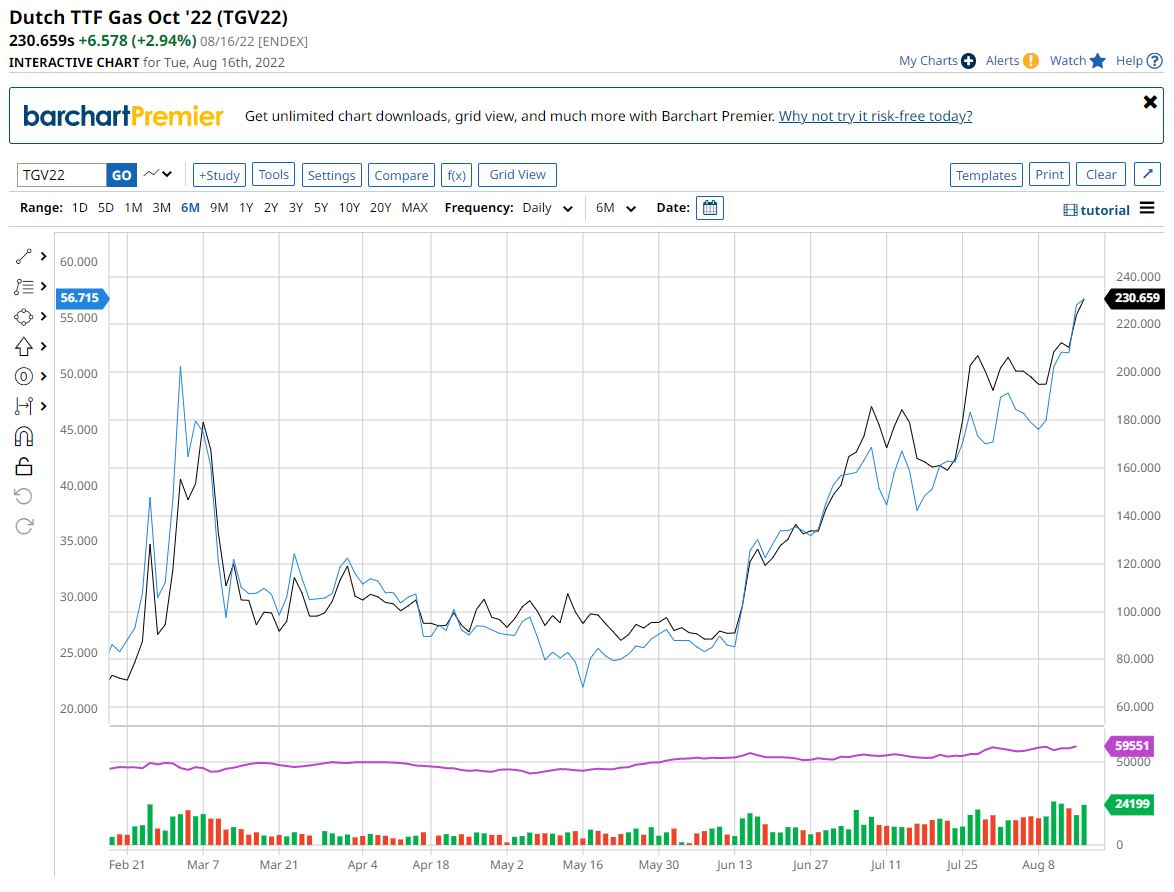No change in the status of Australia’s energy crisis today. The gas price is still sitting around $18Gj and power prices bounced:

I repeat, even these prices are still enough to double utility bills over the next year.
The RBA warned about it again in the minutes:
Headline inflation was 1.7 per cent (seasonally adjusted) in the June quarter and 6.1 per cent in year-ended terms. Petrol prices had risen further in the quarter, reflecting global developments in oil prices and refining margins in that period; the disruptions in domestic energy markets would not be reflected in retail utilities prices until the second half of the year. Members noted that trimmed mean inflation had also remained high, at 1.5 per cent in the June quarter, taking the year-ended rate to 4.9 per cent and implying that inflation had been broadly based. Upstream price pressures and capacity constraints had resulted in rapid inflation in new dwelling construction prices and consumer durables inflation remaining well above historical averages. Supermarkets had continued to pass on upstream cost pressures from suppliers. Fruit and vegetables prices had risen because of bad weather and the recent floods, and grocery price inflation had increased more broadly. Market services inflation had also picked up strongly, especially for restaurants and takeaway, where food and other input prices had risen rapidly. By contrast, rent inflation had increased modestly, reflecting a relatively slow turnaround from earlier declines in rents in Sydney and Melbourne.
All of these price rises, especially food, are made much worse by the energy shock.
Meanwhile, global prices keep going up. Here is DutchTTF versus JKM:
This as Putin all but turns the gas tap off to Europe:
Check on big 3 Gazprom pipeline flows into Europe: minus 75% yoy!
– Nordstream I: 31mcm/d (vs. 152mcm/d 1y ago);
– Yamal at Kondratki: 0 (vs. 80mcm/d 1y ago);
– Brotherhood at Velke: 35 (vs. 80mcm/d 1y ago);#TTF #LNG @kittysquiddy pic.twitter.com/tqqLgv33cp— Alexander Stahel 🇺🇦 (@BurggrabenH) August 15, 2022
Needless to say, the cartel is printing money on the back of everybody else:
Santos has delivered record free cash flow and underlying earnings for the first half thanks to surging oil and LNG prices.
The company reported free cash flow of $US1.7 billion for the period and an underlying profit of $US1.3 billion, up 300 per cent on the previous corresponding period.
The local gas price is down because the Curtis Island cartel has one of six export trains shut down for maintenance. When it reopens, the shocking global price pressures will land back in Australia again.
Which will, of course, send power prices to the moon again. The parasites are already gathering at the host for that:
About 13 per cent, or 7000 megawatts, of the nation’s power generation would make a loss under the current price cap system while larger electricity retailers stand to benefit from a plan to raise the cap, the Australian Energy Market Commission has found.
Regulators imposed an administered price cap of $300 per megawatt hour in June in a bid to calm a volatile market after a period of unusually high wholesale prices.
However, the cap resulted in more than 10 per cent of supply being withheld because companies stood to make a loss on high-cost generation and feared running out of fuel.
Alinta, owner of the Loy Yang B coal plant in Victoria, submitted a formal request to double the cap payment to $600MWh in an effort to dodge a repeat event of the national electricity market being suspended back in June.
Put in coal and gas reservation benchmarked to pre-Ukraine prices and price caps for electricity will never be needed. Deal with the disease, not the symptoms.
Where is the review of the ADGSM that was supposed to be urgent? Stuck in Resource Minister Mad King’s in-tray where it is lost between the latest invites to mining-schmooze events and big “donation” cheques for Labor.
Look over there at terrible ScoMo!


